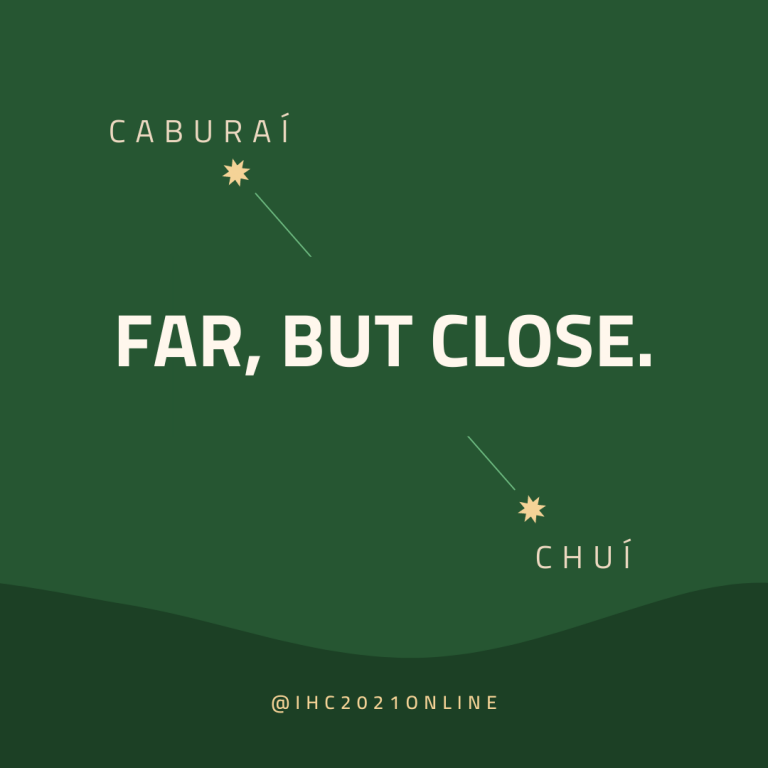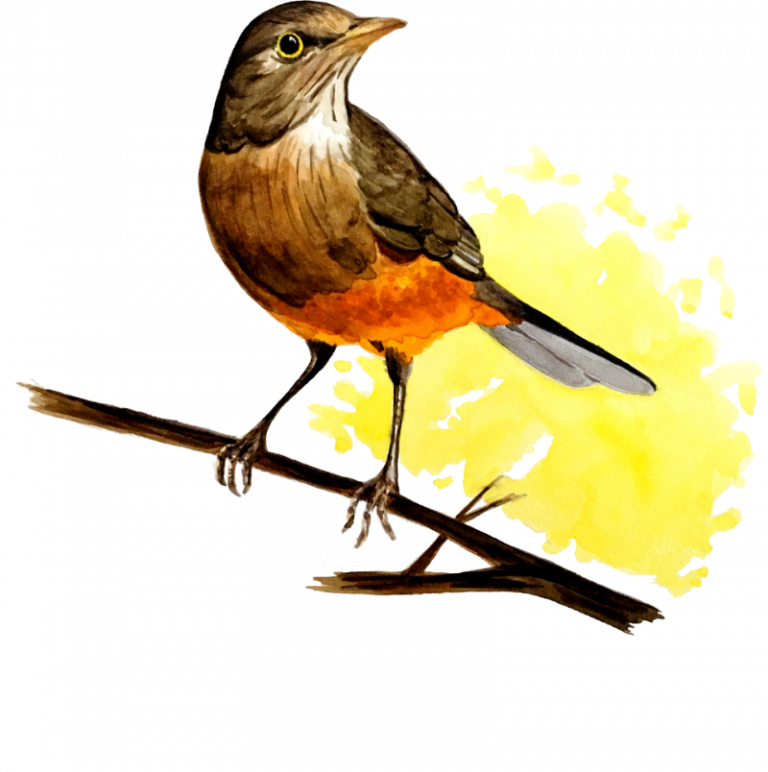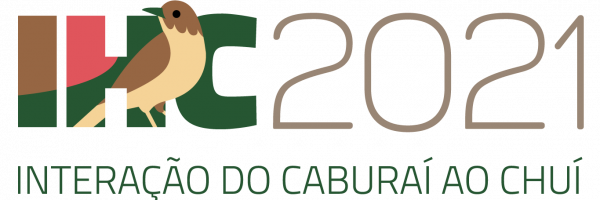Interaction from Caburaí to Chuí
This year, with each participant @home, we propose a “local organization” based in Brazil as a whole, rather than in a specific city. In this way, we can celebrate even more the diversity in research and culture that, over the years, has built in Brazil a solid, multifaceted and plural HCI community. Like the population in our country, the Brazilian HCI community is made up of different colors, accents and customs – a wealth of human factors that reflects the diversity of our research.
Our theme evokes the interaction between the community at the event, despite the geographical distance, and also the research in the IHC area carried out around the whole country, when it refers to our geographic north end (which is Caburaí (RR) and not Oiapoque) and to the extreme south, in Chuí (RS).

The orange thrush and the community

We chose the orange thrush, a national symbol bird, to be incorporated into the event’s theme as a mascot. There are several aspects that make the thrush the most appropriate symbol to the theme proposed for IHC 2021. The orange thrush occurs in all regions of Brazil, as it adapts to everything, as long as there are trees and water, which makes it a born representative of the Brazilian IHC community, which has been strong and grown amid different adversities.
Despite this characteristic feature, as so often observed in our research, the thrush points to contextual differences, as the bird takes on other denominations in different regions. For example, it can be caraxué (in Amazonas), sabiá-coca (in Bahia), sabiá-laranja (in Rio Grande do Sul) and even red-bellied sabiá, sabiá-ponga and sabiá-piranga in different places.
And, if someone, still has did not identified their research in HCI with “His Majesty, the thrush”, they should know that the thrush also points to the individual differences that makes each person unique, since their singing is individual. No orange thrush sings like the other. Even in Tupi, sabiá means “one who prays a lot”, alluding to the bird’s voice. According to an indigenous legend, when a child hears, during the early morning, at the beginning of spring, the song of thrush, he will be blessed with much peace, love and happiness.
Thrush in Brazilian popular culture
In addition to each of these factors being representative of our community, there is also a poetic beauty that needs to be highlighted, as it highlights our cultural and folkloric diversity: the sabiá-laranjeira is mentioned in more than 20 songs by renowned composers of Brazilian popular music, as well as in the verses of Gonçalves Dias, who forever immortalized the land of palm trees where the thrush sings. During the event, following the conceptual line of this symbology, we intend to explore cultural aspects of the different Brazil regions, during social breaks and IHC program.
Finally, to compose the visual identity of the event, we adopted a color palette derived from the Sabiá-laranjeira in addition to other national symbols (Ipê Amarelo and flor do Pau-Brasil), to be worked on in the brand, mascot, website and all the material produced.
Branding options for IHC 2021
Some volunteers from the community proposed branding ideas for IHC 2021. Although the Organizing Committee selected only the option that is being used on the site, we would like to acknowledge everyone’s dedicated work. So, you can see the different ideas and the concept behind each one! Select an option to read the description of your concept and its authors.

